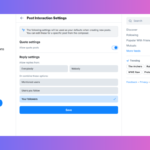The Comprehensive Guide to Understanding the Mortgage Loan Origination Process
Acquiring a home is not only thrilling but also comes with its own set of challenges, particularly if you find yourself grappling with the terminology prevalent in real estate. A crucial term to grasp is “mortgage loan origination,” which signifies the sequence of events from the moment you submit your mortgage application to the day you finalize your loan. Below, the stages of this process will be unraveled to help prospective buyers navigate it more easily.
Defining Mortgage Loan Origination
The mortgage loan origination process entails a lender’s evaluation, approval, and funding of a home loan. This intricate procedure involves several actors—loan officers, underwriters, appraisers, and various other industry professionals—who collaborate to assess both the borrower’s credit standing and the property’s worth. Let’s explore the practical aspects of this process that homebuyers will encounter.
Major Steps in the Mortgage Loan Origination Process
Here’s an outline of the typical phases you’ll experience during mortgage loan origination.
Pre-qualification and Application
The first stage typically involves pre-qualification, giving you a rough idea of the loan amount you may qualify for, based on the basic financial details you share with a lender. (Unlike pre-qualification, pre-approval is a more detailed process that offers a conditional promise from the lender for a specific loan amount.)
This initial step generally includes:
- Meeting with a loan officer for initial consultation
- Preliminary assessment of your financial profile
- Exploration of various loan options and their requirements
- Submission of the formal mortgage application (Form 1003)
- Payment of the application fee
Collecting and Verifying Documentation
The lender will gather and authenticate a set of essential documents, which may include:
- Recent pay stubs (within the last 30 days)
- W-2 forms and tax returns for the previous two years
- Bank statements covering the last two to three months
- Investment account statements
- Records of other assets or income sources
- Documentation of existing debt obligations
Property Appraisal and Inspection
A professional appraisal will be arranged to determine the home’s market value. While a home inspection is optional, it’s highly recommended—it can serve as a valuable DIY project checklist for future maintenance. Remember, an appraisal focuses on potential home value, while an inspection centers on its condition.
Underwriting Process
Underwriting involves assessing financial risk for a fee. Here’s what underwriters will do:
- Review all provided documents
- Confirm employment status and income
- Analyze credit reports and debt-to-income ratios
- Evaluate the property appraisal
- Determine the overall risk associated with the loan
Loan Decision
At last, the underwriter will provide one of three outcomes: Approval, conditional approval (pending further documentation), or denial.
Closing Procedures
After receiving approval, certain final steps must be completed:
- Review and sign the final loan documentation
- Payment of closing costs
- Transfer of funds
- Official recording of the mortgage with local authorities
Timeline and Costs of Mortgage Loans
Each person’s timeline will vary, although Quicken Loans estimates the process typically spans about 50 days:
- Pre-qualification: one to three days
- Application to underwriting: one to two weeks
- Underwriting decision: three to seven days
- Closing: one to two weeks
On the financial side, be prepared for a loan origination fee that generally ranges from 0.5% to 1% of the total loan amount. To further understand the costs involved, refer to the detailed insights provided in interviews with first-time homebuyers across the nation.
Tips to Accelerate the Mortgage Loan Process
Several factors can contribute to delays, such as incomplete documentation, market conditions, or credit-related issues. To ensure a smoother process, the following strategies are recommended:
- Gather necessary documentation ahead of time and maintain copies of all paperwork.
- Respond quickly to requests from the lender, making yourself available for immediate queries and signatures.
- Avoid significant financial changes and refrain from opening new credit accounts while the loan application is in progress.












